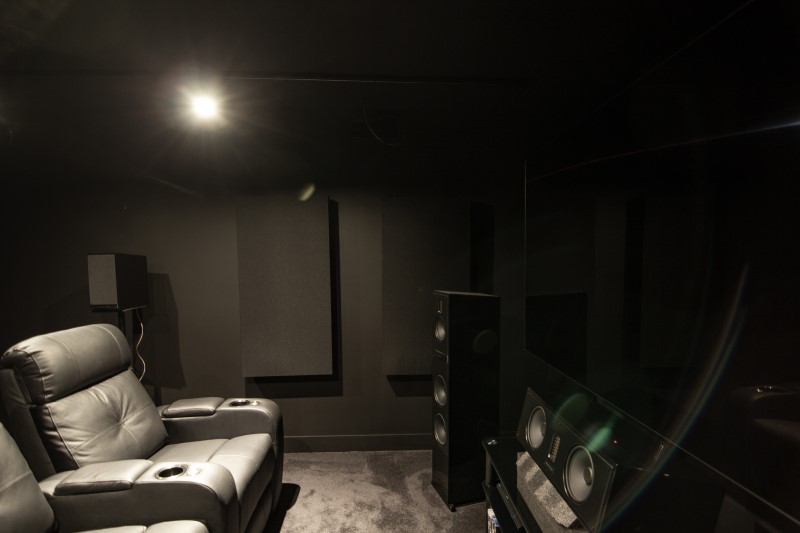Audyssey Flat vs. Reference – Which is Best for Your Room?
After you run Audyssey on your Denon or Marantz receiver, you’ll have a couple of options. You can use the “Flat” or the “Reference” defaults for your Audyssey calibration. If you look online, you’ll see lots of people saying, “Just try them both and choose the one that sounds the best.” That may work, but what are the objective differences? And what does Audyssey think? Flat vs. Reference, which is the best Audyssey setting for your room? Let’s discuss.
How Does Audyssey Define Flat vs. Reference?
Audyssey has some very specific descriptions for their Flat vs. Reference settings:
Audyssey – The “Audyssey” target curve setting makes the appropriate correction at high frequencies to alleviate this problem. A slight roll-off is introduced that restores the balance between direct and reflected sound.
Audyssey Flat –The “Flat” setting uses the MultEQ XT filters in the same way as the Audyssey curve, but it does not apply a high frequency roll-off. This setting is appropriate for very small or highly treated rooms in which the listener is seated quite close to the loudspeakers. It is also recommended for all rooms when the receiver is in THX processing mode, given the receiver is THX Certified. This allows THX re-equalization to operate exactly as it was intended.
The “Audyssey” setting is often called “Reference” or “Movie” on some AV receiver models. On older AV receivers you’ll find that “Flat” is often referred to as “Music.” These descriptions aren’t all that clear though. Why would a “Flat” Audyssey setting be better than “Reference” for small rooms?
What is the Audyssey Reference Setting Doing and Why?
As the description says, it is adding a slight roll-off at the high end. They say this is to restore the “balance between direct and reflected sound.” But what does that mean? Well, in a non-treated or large room, those frequencies will reflect off all the hard surfaces. As they bounce, they will return to your ear at a slightly later time. The most common example of this is the slap echo.
By “rolling off,” or reducing the volume, of those frequencies, the power of the reflections will also be reduced. A lower volume in the reflections means that your brain will better identify the initial sound as the primary one and will ignore the reflection. This may help make your system sound clearer.

What is Audyssey Flat Doing?
As you may expect, the Flat setting doesn’t add that high-frequency roll-off. This setting keeps all the sounds at the volume they were intended. In a reflective room, this can muddy the sound and make dialogue harder to understand. So why does Audyssey say the Flat setting is better for small and highly treated rooms vs. Reference?
Highly treated rooms are rooms with acoustic panels on the walls. These panels are very good at reducing the reflections of the high frequencies. Without the concern of reflections, using the Flat setting makes sense.
But for small rooms, it is a little more confusing. The key is how close you are sitting to the speakers. If you are in a very small room, the proximity of the speakers ensures that the primary sound is so loud that any reflection will be drowned out.
Which Audyssey Setting is Best for You?
Obviously, it depends on your room. In a room with lots of hard surfaces where you aren’t sitting exceedingly close to your speakers, Reference should sound best. Of course, there is no harm in trying both.
What About The Other Audyssey Settings
There are other settings on the menu. Manual should never be used as it disables Audyssey. Why have Audyssey if you are going to disable it? The other common setting is Bypass L/R. As the name suggests, Audyssey applies to every speaker EXCEPT your front left and right. Again, we can think of no reason to use this setting.
Interested in learning more about the Audyssey Midrange Compensation? Check out our article!



The other common setting is Bypass L/R. As the name suggests, Audyssey applies to every speaker EXCEPT your front left and right. Again, we can think of no reason to use this setting.
I have 48″ tall dipole ribbon speakers as my mains. Audyssey makes them sound like tin cans. I use L/R bypass to maintain the sound quality of them, yet give a smoother response from my subs.
That could be one reason to use Bypass L/R (?)
I’m switching back and forth and the bass is definitely stronger on Reference than it is on Flat. I think there’s more to it than rolling off they higher frequencies. Denon’s paragraph needs to be further dissected.